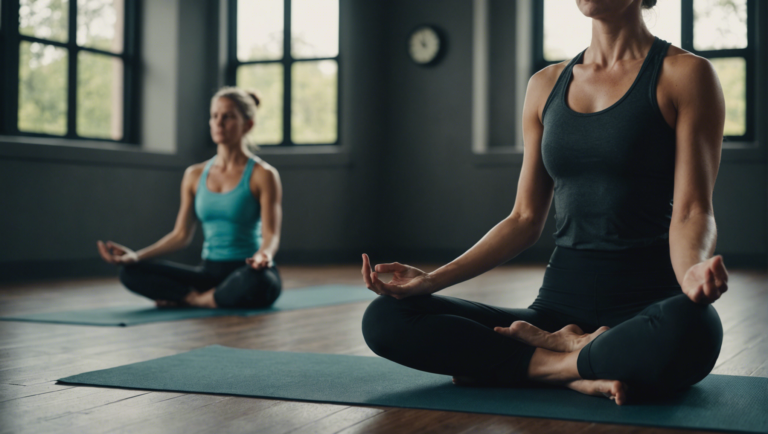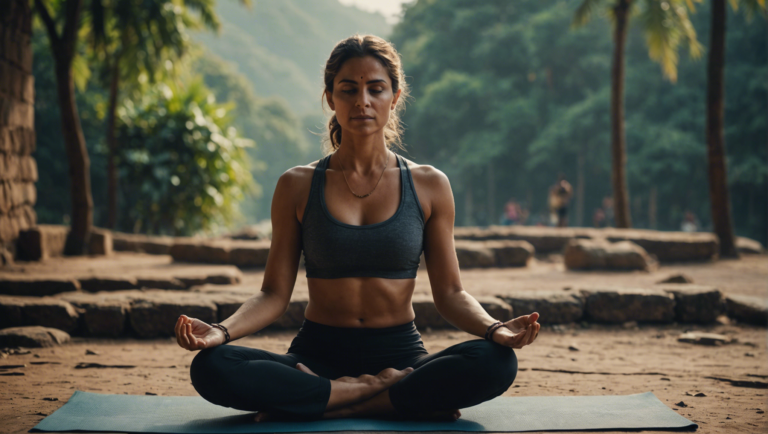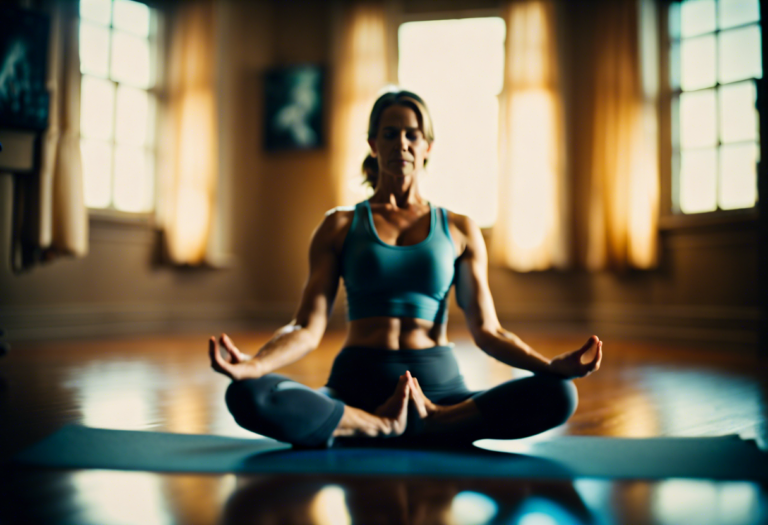Guidelines On How To Securely Carry A Yoga Mat On Your Bike
Guidelines on How to Securely Carry a Yoga Mat on Your Bike
Carrying a yoga mat on your bike can be a convenient way to transport your mat to and from your yoga sessions. However, ensuring that it is securely attached is essential to avoid accidents and damage to your mat. Here are some guidelines on how to securely carry your yoga mat on your bike:
Why Securely Carrying Your Yoga Mat is Important
Securing your yoga mat properly on your bike not only ensures your safety while riding but also protects your mat from damage. A loose mat can get caught in the wheels, leading to accidents. Additionally, a securely fastened mat prevents it from falling off while you are cycling, avoiding loss or damage to the mat.
Choosing the Right Mat
Before you embark on securing your yoga mat on your bike, it’s important to consider the type and size of your mat. Thicker mats may be bulkier and heavier, making it more challenging to carry them on a bike. Opt for a thinner and lighter mat if possible, as it will be easier to transport.
Using a Mat Carrier
One of the most effective ways to securely carry your yoga mat on your bike is by using a mat carrier. Mat carriers are designed to hold your mat in place while cycling, ensuring it stays put throughout your journey. Look for a carrier that is easy to attach and detach from your bike for convenience.
Attaching Your Mat to the Carrier
When attaching your mat to the carrier, ensure it is tightly secured to prevent any movement during cycling. Place the mat on the carrier and fasten the straps or buckles tightly around it. Double-check to make sure the mat is securely held in place before setting off on your ride.
Positioning the Mat
When attaching your yoga mat to your bike, consider the positioning for optimal security and balance. Placing the mat horizontally on the carrier and securing it with straps on both ends can help distribute the weight evenly. Avoid positioning the mat in a way that obstructs your movement while cycling.
Regularly Checking the Mat
During your ride, periodically check the mat to ensure it remains securely fastened. Vibrations from cycling can sometimes cause the straps to loosen, so it’s essential to tighten them if needed. By staying vigilant and checking your mat periodically, you can prevent any mishaps while on the road.
Securing your yoga mat on your bike is a simple yet crucial step to ensure a safe and hassle-free journey to your yoga sessions. By following these guidelines and taking the time to properly attach and check your mat before each ride, you can cycle confidently knowing that your mat is securely in place. Prioritize safety and convenience by securely carrying your yoga mat on your bike.
Benefits of Cycling to Your Yoga Practice
Cycling is a fantastic way to incorporate physical activity into your daily routine, offering several benefits that can complement your yoga practice. The combination of cycling and yoga can lead to a holistic approach to fitness, providing physical, mental, and emotional well-being. Let’s explore the numerous advantages of cycling to your yoga sessions.
Physical Benefits
Cycling is a low-impact cardiovascular exercise that not only strengthens your heart but also improves overall endurance. By cycling to your yoga practice, you engage in a full-body workout that enhances muscle tone, particularly in your legs, core, and glutes. This physical activity helps to increase flexibility and balance, two essential aspects of a successful yoga practice. Additionally, cycling can help improve your posture, which is crucial for maintaining proper alignment during yoga poses.
Mental Well-being
Engaging in cycling before or after your yoga session can have a profound impact on your mental well-being. Cycling, like yoga, is known to reduce stress levels and elevate mood through the release of endorphins, also known as the "feel-good" hormones. The rhythmic motion of cycling coupled with the meditative aspects of yoga can create a sense of calm and relaxation, allowing you to approach your practice with a clear and focused mind.
Environmental Benefits
Not only does cycling benefit your physical and mental health, but it also contributes to a cleaner environment. By choosing to cycle to your yoga class instead of driving, you reduce your carbon footprint and lower greenhouse gas emissions. Embracing sustainable transportation options like cycling aligns with the principles of yoga, promoting harmony with the environment and respect for the Earth.
Time-Efficient Fitness Routine
Integrating cycling into your yoga routine offers a time-efficient way to stay active. Instead of allocating separate time for cycling and yoga, combining the two activities allows you to maximize workout efficiency. Cycling to your yoga class serves as a warm-up or cool-down exercise, preparing your body for the physical demands of yoga or aiding in muscle recovery post-practice.
Enhanced Performance
Regular cycling can enhance your overall performance in yoga by boosting your cardiovascular fitness and stamina. The aerobic benefits of cycling can translate into improved endurance during challenging yoga sequences. Additionally, the strength and muscle tone developed through cycling can support advanced yoga poses that require stability and balance.
Incorporating cycling into your yoga practice presents a multitude of benefits for your physical, mental, and environmental well-being. By embracing the synergy between cycling and yoga, you can create a holistic approach to fitness that nourishes both body and mind. So, pedal your way to the yoga studio and experience the transformative power of combining these two enriching activities.
Choosing the Right Bike Accessories for Yoga Enthusiasts
When it comes to integrating your love for yoga with your passion for biking, choosing the right accessories is essential to ensure a seamless and enjoyable experience. As a yoga enthusiast who enjoys biking, you’ll want to focus on finding the perfect accessories to securely carry your yoga mat while riding. Here are some guidelines to help you securely carry your yoga mat on your bike.
Assess Your Bike and Yoga Mat
Before you embark on your cycling and yoga adventure, it’s crucial to assess both your bike and yoga mat to determine the compatibility between the two. Check the size and weight of your yoga mat to ensure it can be safely carried on your bike without affecting your balance or maneuverability while riding. Additionally, examine your bike to identify potential attachment points where you can secure your yoga mat effectively.
Invest in a Quality Bike Rack or Bag
To securely carry your yoga mat on your bike, consider investing in a quality bike rack or bag specifically designed for this purpose. A bike rack with adjustable straps or bungee cords can provide a stable and secure attachment point for your yoga mat during your rides. Alternatively, a bike bag designed to hold yoga mats can offer a protective and convenient storage solution while cycling.
Utilize Bungee Cords or Straps
If you prefer a more DIY approach to carrying your yoga mat on your bike, bungee cords or straps can be a versatile and cost-effective option. Securely fasten your yoga mat to your bike frame or rack using bungee cords or straps to prevent it from shifting or falling while you ride. Make sure to tighten the cords or straps securely to keep your yoga mat in place throughout your journey.
Consider Aerodynamics and Balance
When attaching your yoga mat to your bike, consider the aerodynamics and balance implications to maintain a smooth and stable ride. Position your yoga mat in a way that minimizes wind resistance and does not obstruct your movements while cycling. Additionally, distribute the weight evenly to prevent any imbalance that may affect your riding performance or safety.
Test the Setup Before Riding
Before hitting the road with your yoga mat securely attached to your bike, take the time to test the setup to ensure everything is properly in place. Give your bike a gentle shake to check if the yoga mat remains stable and secure. Make any necessary adjustments to the attachment points or straps to guarantee a safe and worry-free cycling experience.
By following these guidelines on how to securely carry your yoga mat on your bike, you can enjoy the dual benefits of cycling and practicing yoga outdoors. With the right accessories and a mindful approach to safety and convenience, you can elevate your biking experience while staying true to your yoga practice.
Safety Tips for Cycling with Yoga Gear
Cycling enthusiasts who also enjoy practicing yoga often face the challenge of carrying their yoga mat while riding their bike. It is crucial to ensure safety and convenience when transporting yoga gear on a bicycle. Follow these guidelines for securely carrying a yoga mat on your bike to make your cycling and yoga experience enjoyable and stress-free.
Properly Securing Your Yoga Mat
When carrying a yoga mat on your bike, it is essential to secure it properly to prevent any accidents or distractions while riding. One of the most effective ways to secure a yoga mat is by using adjustable straps or bungee cords. Place the yoga mat parallel to the length of the bike frame and use the straps to fasten it securely. Ensure that the mat is tight enough to avoid it coming loose during your ride.
Choosing the Right Bike Rack
Investing in a quality bike rack designed for carrying yoga mats can significantly improve the safety and stability of transporting your gear. Look for bike racks specifically designed to hold yoga mats securely in place. These racks often come with adjustable straps or bungee cords, making it easier to fasten the mat to the rack without worrying about it shifting or falling off during your ride.
Balancing Weight Distribution
Proper weight distribution is crucial when carrying a yoga mat on your bike to maintain stability and control. Avoid placing the mat in a way that can affect your balance or hinder your ability to steer the bike. Position the mat centrally on the bike rack or frame to distribute the weight evenly. Make sure that the added weight does not interfere with your cycling posture or hinder your maneuverability.
Checking for Interference
Before setting off on your cycling journey with a yoga mat, double-check that the mat does not interfere with any moving parts of the bike. Ensure that the mat is securely fastened and does not come into contact with the wheels, pedals, or brakes. Test the bike’s functionality after securing the yoga mat to confirm that it does not impede your ability to ride safely.
Staying Visible and Alert
Enhance your visibility on the road by attaching reflective gear or lights to your bike, especially when carrying additional items like a yoga mat. Stay alert and attentive while cycling with a yoga mat to anticipate any changes in road conditions or traffic. Make sure to signal your movements clearly to other road users and maintain a safe distance from vehicles to prevent accidents.
By following these guidelines on how to securely carry a yoga mat on your bike, you can enjoy the benefits of cycling and practicing yoga without compromising safety. Prioritize proper securing techniques, invest in the right equipment, maintain weight distribution, check for interference, and stay visible and alert throughout your ride. With these safety tips in mind, you can confidently transport your yoga gear while cycling and make the most of your active lifestyle.
Combining Yoga and Cycling for a Balanced Fitness Routine
Yoga and cycling are two popular forms of exercise that complement each other perfectly in creating a well-rounded fitness routine. By combining the flexibility, strength, and mindfulness aspects of yoga with the cardiovascular benefits of cycling, individuals can achieve a balanced workout that promotes overall health and well-being. Let’s explore how these two activities can be harmoniously integrated into a fitness regimen.
Benefits of Combining Yoga and Cycling
When combining yoga and cycling, individuals can experience a wide range of benefits that target both physical and mental aspects of health. Cycling helps improve cardiovascular health, leg strength, and overall endurance. On the other hand, yoga enhances flexibility, core strength, balance, and mental focus. By incorporating both activities into your routine, you can achieve a comprehensive workout that targets different muscle groups while promoting mental clarity and relaxation.
Warm-Up with Yoga
Before hopping on your bike, consider starting your workout with a gentle yoga warm-up session. This can help prepare your body for the physical demands of cycling by loosening up tight muscles and improving flexibility. A series of yoga poses such as Cat-Cow, Downward-Facing Dog, and Forward Fold can help awaken your muscles and improve circulation, ensuring a smoother transition into your cycling session.
Post-Ride Yoga Cool Down
After a rewarding cycling session, wind down with a relaxing yoga cool down to help stretch out tired muscles and promote recovery. Poses like Pigeon Pose, Seated Forward Bend, and Child’s Pose can help release tension in the hips, hamstrings, and lower back – areas commonly tight from cycling. yoga into your post-ride routine can help prevent injury, improve flexibility, and promote a sense of relaxation after a challenging workout.
Mindfulness on the Move
Both cycling and yoga emphasize the importance of mindfulness and being present in the moment. While cycling, focus on your breath, pedal strokes, and surroundings to cultivate a sense of awareness and appreciation for the journey. Similarly, yoga encourages practitioners to stay present on the mat, connecting breath with movement to enhance mind-body awareness. By combining these two practices, you can cultivate a deeper sense of mindfulness both on and off the bike.
Finding Balance
The key to integrating yoga and cycling into a balanced fitness routine is listening to your body and honoring its needs. While cycling provides an excellent cardio workout, yoga offers an opportunity to restore and rejuvenate the body. Finding the right balance between these two activities based on your fitness goals and energy levels can help prevent burnout and promote long-term sustainability in your fitness routine.
Combining yoga and cycling can offer a synergistic approach to fitness that targets both the physical and mental aspects of health. By incorporating yoga as a warm-up, cool down, or standalone practice alongside cycling, individuals can experience a well-rounded workout that promotes strength, flexibility, endurance, and mindfulness. Remember to listen to your body, find balance in your routine, and enjoy the journey of integrating these two rewarding forms of exercise into your fitness regimen.
Conclusion
Cycling into your yoga practice can amplify the benefits you reap from each activity. Cycling not only provides a convenient mode of transportation to and from your yoga classes but also serves as an excellent warm-up or cool-down exercise. By following the guidelines on securely carrying your yoga mat on your bike, you can seamlessly transition between these two activities, making your fitness routine more efficient and enjoyable.
Choosing the right bike accessories for yoga enthusiasts is essential to ensure a smooth and safe ride. Investing in a quality bike rack or bag specifically designed to transport yoga mats can prevent any accidents or damage to your gear while cycling. Additionally, equipping your bike with accessories like a water bottle holder, a bike lock, and proper lighting can enhance your overall cycling experience and contribute to your safety on the road.
When cycling with yoga gear, it’s crucial to prioritize safety at all times. Stay visible to other road users by wearing bright clothing and using lights or reflectors on your bike, especially when cycling during low-light conditions. Securely fasten your yoga mat to your bike using reliable straps or racks to prevent it from coming loose and causing accidents. By adhering to these safety tips, you can enjoy the benefits of cycling without compromising your well-being.
Combining yoga and cycling can create a harmonious balance in your fitness routine, providing a holistic approach to physical and mental well-being. While cycling strengthens your cardiovascular system and improves endurance, yoga enhances flexibility, balance, and mindfulness. By integrating these two practices, you can achieve a comprehensive workout that nurtures both your body and mind, promoting overall health and vitality.
Integrating cycling into your yoga practice offers a myriad of advantages, from enhancing your physical fitness to promoting eco-friendly transportation. By following the guidelines on securely carrying your yoga mat on your bike, you can streamline your transition between cycling and yoga sessions, making your fitness routine more seamless and enjoyable. Additionally, understanding the benefits of cycling to your yoga practice, choosing the right bike accessories, prioritizing safety, and combining yoga and cycling can elevate your overall well-being and enrich your fitness journey. Embrace the synergy between cycling and yoga to experience a balanced and fulfilling lifestyle.


